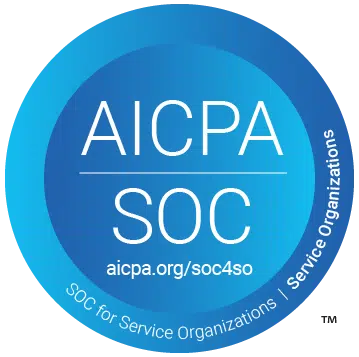
As we move further into 2025, governments worldwide are facing unprecedented challenges and opportunities. The rapid pace of technological advancement, evolving citizen expectations, and the need for greater resilience are forcing public sector leaders to rethink traditional approaches. For organizations and citizens alike, understanding the key trends shaping government in 2025 is critical for navigating the future.
9 Government Trends to Anticipate in 2025 and Beyond
At Bronson Consulting, we help governments bridge the gap between transformation goals and implementation realities. Based on emerging global trends and our work in Canada's public sector, here are 9 key trends we believe every government leader should be watching closely in 2025.
1. From Risk Aversion to Intelligent Risk-Taking
For decades, the culture of government has prized stability, predictability, and compliance. While important, these qualities have often stifled innovation and created an overly cautious environment. In 2025, forward-thinking government leaders are beginning to shift this approach, not by abandoning accountability, but by learning to take smart, calculated risks.
What does this look like in practice?
- Embracing agile policy design and iterative service delivery.
- Testing new ideas with small-scale pilots before scaling up.
- Reducing the stigma of failure by rewarding learning and adaptation.
2. Data-Driven Decision Making
In order to shift from being risk-averse to risk-taking, governments need to learn how to utilize and leverage data ethically as well as strategically. This includes using advanced analytics and social listening to inform policy, allocate resources, and measure impact more accurately than ever before.
However, the rise of data-driven government also brings new challenges around privacy, security, and ethical use. Public sector organizations must establish clear frameworks for data governance and stewardship, balancing innovation with the need to protect citizens' rights and maintain public trust.
3. Building Resilience and Agility

The events of recent years have underscored the importance of resilience in government. In 2025, public sector organizations are learning how to balance bureaucracy with agility, by developing the capacity to anticipate, absorb, and adapt to shocks such as pandemics, cyberattacks, or economic disruptions.
This trend is driving investment in scenario planning, risk management, and flexible workforce strategies. Governments are also reimagining procurement and budgeting processes to allow for faster, more responsive action in times of crisis.
4. From Efficiency-Only to Mission-Centric Thinking
Public sector performance has historically been measured by inputs and outputs, for example the amount of dollars spent, programs launched, services delivered. But this model often misses the bigger picture: Is it working? Are people's lives getting better?
The new mindset puts outcomes, not just efficiency, at the center. This means governments will now have to redefine success in terms of mission delivery — like reducing homelessness, improving access to care, or boosting community resilience.
In addition to this, we also predict that governments in the future will eventually shift from linking day-to-day operations to long-term social impact. With generative AI and data analytics tools becoming more widely available, governments have an opportunity to embed mission metrics into real-time dashboards, allowing leaders to track performance in more meaningful ways.
5. Fostering Cross-Sector Collaboration
No single agency or department can tackle today's complex social, economic, and environmental challenges alone. In 2025, governments are increasingly forming partnerships with the private sector, non-profits, academia, and even other governments to co-create solutions.
These collaborations are breaking down traditional silos, enabling the pooling of resources, expertise, and data. Successful cross-sector initiatives often leverage shared digital platforms and open data to drive innovation and improve outcomes. For public sector leaders, building and sustaining these partnerships requires a new set of skills, including negotiation, stakeholder engagement, and systems thinking.
6. Prioritizing Equity and Inclusion
Equity and inclusion are no longer optional in government policy; they are imperatives. In 2025, governments are embedding equity considerations into every aspect of their work, from policy design to service delivery and workforce development.
This includes using data to identify and address disparities, engaging diverse communities in decision-making, and ensuring that digital transformation does not leave marginalized groups behind. Public sector leaders are also focusing on building more diverse and inclusive teams, recognizing that a broader range of perspectives leads to better outcomes for all citizens
7. Enhancing Citizen Engagement

Citizen expectations are rising, and governments are responding by making engagement more meaningful and accessible. In 2025, digital platforms and social media are being used to gather real-time feedback, crowdsource ideas, and co-design policies with the public.
This trend is fostering a more participatory model of governance, where citizens are not just passive recipients of services but active partners in shaping their communities. Effective engagement requires transparency, responsiveness, and a willingness to act on public input, all of which contribute to stronger trust in government institutions.
8. Investing in Workforce Development
The future of government depends on its people. In 2025, public sector organizations are investing heavily in workforce development to build the skills needed for a digital, data-driven world. This includes upskilling and reskilling employees in areas such as technology, data analytics, and change management.
Flexible work arrangements, continuous learning opportunities, and a focus on employee well-being are becoming standard practice. By nurturing talent and fostering a data-driven culture of innovation, governments can attract and retain the next generation of public servants.
9. Strengthening Ethical Governance
As technology becomes more deeply embedded in government operations, ethical considerations are coming to the fore. In 2025, public sector leaders are developing clear guidelines for the responsible use of AI, data, and emerging technologies.
This involves establishing transparent processes for decision-making, ensuring accountability, and engaging the public in conversations about the ethical implications of new tools. By prioritizing ethics, governments can harness the benefits of innovation while safeguarding the rights and interests of their citizens
Leading Through Change: Why Mindset Shifts Matter More Than Ever
In the public sector, systems transformation is often discussed in terms of digital roadmaps, regulatory reforms, or fiscal policy. But these won't succeed unless mindsets evolve first.
Governments that adopt these five leadership shifts will be better positioned to:
- Drive innovation without compromising public trust.
- Build cross-functional teams that solve complex problems.
- Align their operations with long-term missions that serve communities equitably
- Attract and retain public servants who are energized, empowered, and continuously growing.
The trends shaping government in 2025 reflect a broader shift toward more adaptive, collaborative, and citizen-centric public sector leadership. By embracing digital transformation, leveraging data, fostering partnerships, and prioritizing equity, governments can navigate uncertainty and drive positive change for their communities.
At Bronson Consulting, we bring deep experience in public sector transformation—from strategy to implementation. If your team is ready to shift mindsets, modernize operations, and deliver better outcomes, let's talk.





